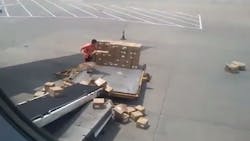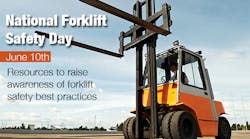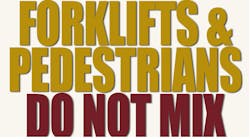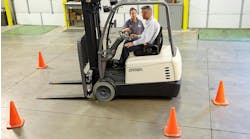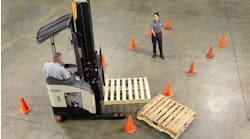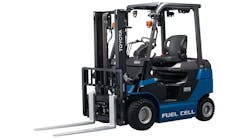If you’d have told me 10 years ago that a story on logistics safety would one day make the front page of the Wall Street Journal, I’d have thought—“not even on a slow news day.” But in this morning’s edition—in the below-the-fold section of the front page devoted to quirky human interest stories, was this headline: “For Those in UPS’s ‘Circle of Honor,’ Safe Driving is the Total Package.” The fact that logistics safety is making the front-page in this age of fast-paced “only what I need to know” news feeds could in itself be considered great news. And it’s nice that general business periodicals like WSJ are following the lead of logistics periodicals like MH&L in reporting it.
Our upcoming June cover story on Forklift Safety actually touches on a key challenge to safety that is mentioned in the WSJ piece. How does one promote a culture of workplace safety when your business depends on meeting next-day and same-day service requirements? The story notes that lately UPS has been pushing its drivers to speed up while still adhering to the safety rules that qualify drivers for their “Circle of Honor,” whose members have gone accident free for many years. The story cites the boom in e-commerce business which has boosted daily package volume by 12% over the past five years for this additional pressure. Nevertheless, as UPS spokesman Dan McMackin states in the story, “The job can be done as efficiently as we’ve designed it, and safely, if you follow the methods.”
MH&L’s story reports a similar viewpoint from Tom Pettit, vice president and general manager of supply chain solutions for 3PL service provider Ryder Systems. Pettit told me of a grocery retailer client that wanted to improve the velocity of their store replenishment. They had been replenishing stores three times a week and wanted to go to four and a half times a week—with smaller batches of fresher goods. At the same time, they didn’t want to carry any more inventory to accomplish that.
The solution was not to run faster, but to run smarter. And that meant leaner.
“We run a shipping center for this retailer and we have certain dock-to-stock criteria,” Pettit told me. “We have to have it put away by so long and then turned out by so long. They’re compressing lead time in that process. We’re also providing the trucking for them so that means taking waste out of that handoff between the trucking company and warehouse company.”
Forklifts—and forklift safety—play a key role in this holistic approach to lean.
“We can improve speed not by turning a forklift faster, or by increasing the [vehicle load] rating,” he continued. “In fact when we did an acquisition we actually de-rated some of the forklifts in some of our buildings because of safety concerns. But then we had to take out other waste—like reducing the transportation distance in the warehouse via better warehouse design, by better slotting, by improved replenishment.”
His team uses a standard series of processes and scorecards that help them find and eliminate waste and avoid having to do an activity faster. Their employees are given incentives to adhere to the process They earn extra money by being on standard so they look for opportunities to eliminate downtime. Supervisors are also part of this system.
“Supervisors are no longer just working on adherence to process, but coaching people to get better,” Pettit said. “This lean labor management identifies the engineered labor standard for an activity and when people meet or exceed it they get incentive compensation. However they only earn it if they’re safe and hit quality standards. We’re not sacrificing safety or quality in the name of productivity. We’re finding we’re getting substantial productivity pickup, better coaching of the employees by supervisors and better engagement of employees in solving problems by driving productivity themselves and for the team.”
Achieving a spotless safety record is a matter of owning it, not pursuing it for someone else. When that’s no longer news, supply-chain-wide productivity will be the new standard of business excellence.
For examples of material handling standards that no company can afford, see our gallery, Material Handling Failures Caught on Video. Click HERE to go there.


